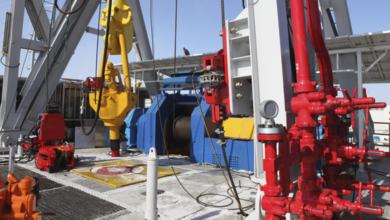Drilling Ahead: Shell/CNPC JV shows that change isn’t coming; it’s here
By Linda Hsieh, managing editor
In the last issue of Drilling Contractor, I wrote an article in which I interviewed Apache’s automation advisor for worldwide drilling Jim Rogers on the automation revolution in the field of drilling. One point Jim strongly emphasized was that a shift in our business model was inevitable if this industry is going to implement automation technologies in a way that will bring a step-change in drilling performance. Yes, operators will have to drive this business-model change, and make no mistake, they will do it, Jim believed.
As if to prove his point, barely two weeks after our interview, Shell and China National Petroleum Corp (CNPC) signed a joint venture (JV) agreement to develop a highly automated well manufacturing system for the high-density onshore drilling business. The JV will employ technologies such as automated directional drilling and drilling optimization, as well as the low-cost manufacturing capabilities of CNPC subsidiaries worldwide, to develop highly automated rigs that will help the two companies “to unlock resources that may be uneconomic for others to unlock.”
This agreement could likely be the turning point in drilling’s automation revolution: The well manufacturing system will not only blur the boundaries between the traditional roles of operator, drilling contractor and service company, but it also will turn the current dayrate business model on its head.
In a press briefing held in Houston in late July, Shell’s executive VP wells Peter Sharpe said that the JV “is not about Shell owning a drilling contractor.” He believes it will help the industry to redefine a business model that “has hampered our ability to integrate and to custom-tailor some of the low-cost solutions … that we believe are fundamental to success in the high-density drilling business.”
Neither drilling contractors nor service providers have been overly enthusiastic about using operators’ algorithms and programmable logic controllers on their equipment, he said, and that’s been a barrier to the implementation of automation technologies for drilling optimization.
However, with Shell alone looking to drill some 30,000 tight-gas and coalbed methane wells through this decade, step-change is needed to remain competitive, Mr Sharpe said. Gaining incremental changes through excellence in engineering, lean processes or well-trained people simply won’t be enough.
With the well manufacturing system, expected to be in the field by 2013, the Shell/CNPC JV envisions using multiple machines to drill and complete different phases of the well in a factory-like system, with multiple wells simultaneously drilled with minimal human input.
“As drilling contractors say, most rigs today are like Swiss Army knives – they can do many, many things,” Mr Sharpe said. “What we’re looking to do is build machinery that will only do one standardized task in the most efficient way, and it will do no additional tasks, and it will do that 1,000, 2,000, 5,000, 10,000 times in a particular field.”
He went on to emphasize that the well manufacturing system will not be a universal solution for everything in Shell’s portfolio. “I don’t want you to get the impression that this is going to be how Shell is going to do everything,” he said. It’s about balancing scale, duration and standardized well designs and applying a “well manufacturing mentality” where it makes sense economically.
Going forward, drilling contractors and service providers will continue to be an important part of Shell’s business, he said, “but not all of our business.”
“They’ll be important for us offshore where we will rely still on their technology and abilities, and they’ll be important in some of our onshore plays where this approach isn’t suitable.”
The business-model change isn’t just coming; it’s already here.
Linda Hsieh can be reached via e-mail at linda.hsieh@iadc.org.



